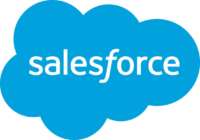Eva Skidmore, the vice president of public sector for Salesforce, said agencies need to continue to improve customer service and IT modernization together by adopting open platforms and application programming interfaces (APIs).
Improving Customer Service in Agencies
There is not necessarily a need to replace, rehost or refactor. One can plug in to existing or legacy systems. Whether they are cloud or complex legacy systems, many government programs and systems have to come together to deliver end-to-end services
Eva Skidmore
Vice President, Public Sector, Salesforce
IT Transformation Strategy
If you offer that customer-centric approach to modernization and help teams across agencies figure out what’s best for them, it helps that program, business and IT team use the cloud and use this open platform to realign, automate and scale.
Eva Skidmore
Vice President, Public Sector, Salesforce
Let’s turn on the way back machine and go back to 1993. President Bill Clinton had just been elected. Movies like Groundhog Day and the Fugitive topped the box office. And Congress began its push to encourage, prod and push agencies to think harder about how they serve citizens. Lawmakers, 26 years ago, passed the Government Performance and Results Act (GPRA).
GPRA required agencies to engage in performance management tasks such as setting goals, measuring results, and reporting their progress. In order to comply with the GPRA, agencies were supposed to produce strategic plans, performance plans and conduct gap analyses of projects.
Fast forward, two decades plus later and the Government Accountability Office’s website is filled with reports about how agencies are meeting citizens’ expectations. From IRS phone service to the Social Security Administration answering questions about retirement and disability to Federal Student Aid, the National Park Service and nearly every other agency delivering high quality services in an expedient manner, the results are mixed.
The most recent data from the Trump administration for its customer service cross-agency goal highlights 14 agencies and one interagency initiative that the White House identified as “high impact service providers.” Under Circular A-11, OMB required these agencies to complete a self assessment to rate their program maturity and identify initial areas of development to inform their required action plan. Then, the agencies met with the Office of Management and Budget to evaluate their customer experience self-assessment and draft action plans to identify common pain points, capacity gaps and opportunities.
Now these 14 agencies are submitting metrics to a dashboard measuring customer satisfaction as part of an effort to see how departments are adopting best practices.
A key piece to improving customer experience improvement is technology. At the same time, agencies are following an IT modernization strategy that must focus on user centered design and meeting customer expectations.
Eva Skidmore, the vice president of public sector for Salesforce, said agencies need to continue to improve customer service and IT modernization together by adopting open platforms and application programming interfaces (APIs).
“There is not necessarily a need to replace, rehost or refactor. One can plug in to existing or legacy systems. Whether they are cloud or complex legacy systems, many government programs and systems have to come together to deliver end-to-end services,” Skidmore said on the Innovation in Government show, sponsored by Carahsoft. “The technology is designed to enable agencies to be more efficient and more effective. As part of the modernization process, picking a platform, picking a trusted provider based on certain criteria is going to be essential to success. The way we think about it is if it’s fast, easy to implement, secure and compliant and it enables you, as an IT organization and a program, to be agile and customer centric. All of these factors play a really important role in whether you are setting yourself up for long term sustainability and cost savings over time.”
Skidmore said agencies can focus a lot of the initial technology modernization on the user layer or engagement platform through APIs and open platforms.
“One example is with Amtrak. They had a significant number of applications across their business that were developed and they did an application rationalization process where they evaluated what were the key processes and applications that they needed to have to serve their business and make their organization more effective,” she said. “They reduced the number of applications they had but increased the ability of the people on the tracks to access the information they needed to do their jobs.”
She said organizations have to break down the silos that have developed over the last few decades between the programs, the technology and the business offices.
“If you offer that customer-centric approach to modernization and help teams across agencies figure out what’s best for them, it helps that program, business and IT team use the cloud and use this open platform to realign, automate and scale,” Skidmore said.
Underpinning this most recent focus on customer service are the administration’s Centers of Excellence initiative and the Integrated Digital Experience Act (IDEA), which President Donald Trump signed into law in December.
Skidmore said the law and the CoEs are placing the focus on the customer or user first and the technology second.
“When organizations and customers are choosing something like a cloud platform that helps dissolve silos, gives them access to data and improve process and interaction, that’s how we see agencies go through those changes,” she said. “Once teams realize that they do place the customer at the center of everything they do, that’s how they reimagine public service.”
A perfect example of this is the Agriculture Department’s Farmers.gov portal. The agency is combining the IT modernization and customer experience efforts to improve how they meet farmer’s and producer’s needs.
Skidmore said the Farmers.gov portal is becoming a virtual front door for USDA customers to walk into and get their work done from the ease of their mobile phone or desktop computer. She said they don’t have to leave their farms or even their tractors to send data to the agency.
USDA’s effort also highlights an important lesson for other agencies. Skidmore said one of the big challenges for a lot of organizations is identifying the best place to start to improve customer service through people, process and protocols.
She said IT modernization and improving customer services is a journey and choosing the right program, project and platform is one big part of the journey.
Skidmore said leading-edge agencies have picked a place to start, seen the impact of those changes and iterated to become even better. Those organizations also can expand to other parts of their business lines based on the lessons learned and experiences of the initial program.
 About Salesforce
About Salesforce
With the innovation of the Customer Success Platform, Salesforce transforms the way departments, agencies, and their community of contractors meet the unique demands of today’s constituent and more effectively deliver on their mission. Salesforce’s FedRAMP-authorized Government Cloud – the world’s #1 enterprise cloud, built for government – gives stakeholders the tools they need to connect data, process, and people while also reducing the risk, cost, and complexity of traditional IT. The Salesforce Government Cloud enables organizations to digitally transform the business of government rapidly and revolutionize the citizen experience, from waiting in lines – to online, while meeting the regulatory and compliance needs of the U.S. Government.
Copyright
© 2025 Federal News Network. All rights reserved. This website is not intended for users located within the European Economic Area.










